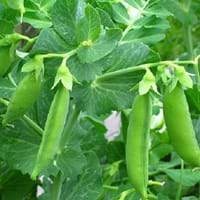Life Span
Perennial
Annual
Type
Bulb or Corm or Tuber
Vegetable
Origin
South America, Argentina
Mediterranean
Types
Not Available
Sugar Bon pea, Super Sugar Snap bean
Number of Varieties
Not Available
Habitat
Temperate Regions
Fields, Loamy soils
USDA Hardiness Zone
5-9
Not Available
Sunset Zone
21,22
A1, A2, A3, H1, H2, 1a, 1b, 2a, 2b, 3a, 3b, 4, 5, 6, 7, 8, 9, 10, 11, 12, 13, 14, 15, 16, 17, 18, 19, 20, 21, 22, 23, 24
Habit
Clump-Forming
Vining/Climbing
Minimum Width
Not Available
Flower Color
Light Blue, Light Purple, Silver, Sky Blue
White, Pink, Lavender
Flower Color Modifier
Bicolor
Bicolor
Fruit Color
Not Available
Green
Leaf Color in Spring
Green, Light Green, Gray Green
Green, Sea Green, Gray Green
Leaf Color in Summer
Light Green
Not Available
Leaf Color in Fall
Several shades of Green
Green, Blue Green, Gray Green
Leaf Color in Winter
Light Green
Green, Blue Green, Gray Green
Leaf Shape
Grass like
Egg-shaped
Plant Season
Spring
Spring, Fall, Winter
Sunlight
Full Sun, Partial Sun, Partial shade
Full Sun, Partial Sun
Type of Soil
Clay, Loam, Sand
Clay, Loam, Sand
The pH of Soil
Acidic, Neutral, Alkaline
Neutral
Soil Drainage
Well drained
Well drained
Bloom Time
Early Spring, Spring, Late Winter
Early Spring, Spring, Late Spring, Fall, Late Fall, Early Winter, Winter, Late Winter
Tolerances
Drought
Dry Conditions, Salt and Soil Compaction, Variety of soil types
Where to Plant?
Container, Ground
Ground
How to Plant?
By dividing rhizomes, tubers
Seedlings
Plant Maintenance
Medium
Medium
Watering Requirements
Average Water Needs, Do Not over Water, Requires regular watering
Allow to dry out slightly between watering, Needs watering once a week
In Summer
Lots of watering
Consistently
In Spring
Moderate
Adequately
In Winter
Average Water
Less Watering
Soil pH
Acidic, Neutral, Alkaline
Slightly Acidic
Soil Type
Clay, Loam, Sand
Clay, Loam, Sand
Soil Drainage Capacity
Well drained
Well drained
Sun Exposure
Full Sun, Partial Sun, Partial shade
Full Sun, Partial Sun
Pruning
Remove damaged leaves, Remove dead branches, Remove dead leaves
No pruning needed, Prune in flowering season, Remove damaged leaves
Fertilizers
All-Purpose Liquid Fertilizer
Compost, fertilize in winter
Pests and Diseases
Slugs, Snails
Downy mildew, Gall Insects, Leaf curl, Peach Leaf Curl, Powdery mildew, Root rot
Plant Tolerance
Drought
Light Frost
Flower Petal Number
Single
Single
Foliage Texture
Medium
Medium
Foliage Sheen
Matte
Matte
Attracts
Bees, Birds, Hummingbirds
Not Available
Allergy
Not Available
Diarrhea, Intestinal gas
Aesthetic Uses
Showy Purposes
As decorated salad
Beauty Benefits
Not Available
Remove blemishes, Skin Problems
Environmental Uses
Air purification
Fixes Nitrogen, Food for animals, Very little waste
Medicinal Uses
No Medicinal Use
No Medicinal Use
Part of Plant Used
Flowers
Leaves, Seeds
Other Uses
Not Available
Cosmetics, Making Shampoo, Used as a nutritious food item, Used As Food
Used As Indoor Plant
Yes
No
Used As Outdoor Plant
Yes
Yes
Garden Design
Container, Lawns and Turf, Mixed Border, Rock Garden / Wall, Wildflower
Container, Edible, Herb, Vegetable, Vine
Botanical Name
Ipheion uniflorum
PISUM sativum
Common Name
Spring Starflower, Springstar
Garden Pea
In Hindi
Spring Starflower
चीनी मटर
In German
Frühling Borretsch
Kefe
In French
Spring Starflower
Erbse
In Spanish
primavera Flor de estrella
guisante
In Greek
άνοιξη starflower
μπιζέλι
In Portuguese
primavera Starflower
ervilha
In Polish
Wiosna Starflower
groch
In Latin
Spring Starflower
pea
Phylum
Magnoliophyta
Magnoliophyta
Class
Lilopsida
Magnoliopsida
Order
Asparagales
Fabales
Family
Liliaceae
Fabaceae
Clade
Angiosperms, Monocots
Dicotyledonous
Tribe
Gilliesieae
Not Available
Subfamily
Allioideae
Not Available
Number of Species
Not Available
Season and Care of Spring Starflower and Sugar Snap Pea
Season and care of Spring Starflower and Sugar Snap Pea is important to know. While considering everything about Spring Starflower and Sugar Snap Pea Care, growing season is an essential factor. Spring Starflower season is Spring and Sugar Snap Pea season is Spring. The type of soil for Spring Starflower is Clay, Loam, Sand and for Sugar Snap Pea is Clay, Loam, Sand while the PH of soil for Spring Starflower is Acidic, Neutral, Alkaline and for Sugar Snap Pea is Neutral.
Spring Starflower and Sugar Snap Pea Physical Information
Spring Starflower and Sugar Snap Pea physical information is very important for comparison. Spring Starflower height is 10.20 cm and width 5.10 cm whereas Sugar Snap Pea height is 30.00 cm and width Not Available. The color specification of Spring Starflower and Sugar Snap Pea are as follows:
Spring Starflower flower color: Light Blue, Light Purple, Silver and Sky Blue
Spring Starflower leaf color: Green, Light Green and Gray Green
Sugar Snap Pea flower color: White, Pink and Lavender
- Sugar Snap Pea leaf color: Green, Sea Green and Gray Green
Care of Spring Starflower and Sugar Snap Pea
Care of Spring Starflower and Sugar Snap Pea include pruning, fertilizers, watering etc. Spring Starflower pruning is done Remove damaged leaves, Remove dead branches and Remove dead leaves and Sugar Snap Pea pruning is done No pruning needed, Prune in flowering season and Remove damaged leaves. In summer Spring Starflower needs Lots of watering and in winter, it needs Average Water. Whereas, in summer Sugar Snap Pea needs Consistently and in winter, it needs Less Watering.





